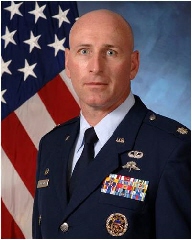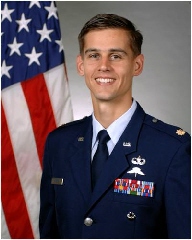 |
Page Two |

 |
On Thursday, Jan. 14 at 3 p.m. ET we will interview U.S. Air Force Maj. Jason Daniels, director of operations for the 720th Operations Support Squadron and Lt. Col. Brett J. Nelson, Commander of the 23d Special Tactics Squadron (23 STS), 720th Special Tactics Group (720 STG), Hurlburt Field, Fla. Maj. Daniels, an Air Force combat controller, is part of the team that is opening Port au Prince airport, the only airstrip in Haiti, after its tower collapsed. Lt. Col. Nelson and Maj. Daniels will discuss special tactics to support humanitarian operations and the training that it takes to conduct such operations. They will also explain the process for assessing conditions on airfields, the requirements for making airdrops, conducting para-rescue missions and working in concert with interagency partners.
|
 |
| Rescue Ops in Haiti: ‘The First 72 Hours Are Critical’ |
When a devastating earthquake struck Haiti on Tuesday, it knocked out the control tower at Port-au-Prince airport. A team of Air Force special operators has now reopened the airport — and is working to keep things running so that more relief can arrive.
The 23rd Special Tactics Squadron, 720th Special Tactics Group, is overseeing air traffic control at Port-au-Prince airport. Lt. Col. Brett Nelson, commander of the squadron, told reporters in a roundtable this afternoon that air operations were continuing, although they had experienced a “significant slowdown” because of a lack of ground support equipment.
Critically, the airfield has only two fuel trucks and two towbars for all the planes coming into Port-au-Prince. “When an aircraft lands and requires fuel or has to be moved around on the airfield by towing, it significantly delays us processing that aircraft and getting it back out,” Nelson said.
According to Nelson, the airport would be able to continue operations at night. “Airfield lighting is operational,” he said. “We have the personnel capability and we have portable light systems … In the event the lighting goes out we can turn on within 30 minutes and continue operations as normal.”
Air Force special operators have thus far rescued seven people from collapsed buildings. “The first 72 hours are critical,” said Maj. Jason Daniels, the director of operations for the 720th Operations Support Squadron.
Other military assets are on their way, including a contingency response group from Air Mobility Command. Above, sailors of Helicopter Anti-Submarine Squadron 7 prepare to for departure to aircraft carrier USS Carl Vinson, currently en route to Haiti.
WASHINGTON, Jan. 14, 2010 – U.S. Air Force special operations forces in Haiti have rescued seven survivors of the massive Jan. 12 earthquake that continues to wreak havoc on the country in its wake, according to Air Force officials.
Joe Edwards; special SgtMacsBar CCT Corespondent
News of
the rescues represents a small victory in the face of what some have
described as one of the greatest humanitarian emergencies in the
history of the Americas.
Air Force Special Operations Forces have been manning the airport in
the capital of Port-au-Prince since about 8 p.m. yesterday, conducting
airfield operations in addition to recovery and rescue efforts, said
Air Force Lt. Col. Brett J. Nelson.
“Within hours of our arrival last evening, we established
airfield control and have maintained that control conducting 24-hour
operations at Port-au-Prince airport,” Nelson, the commander
of the 23rd Special Tactics Squadron, 720th Special Tactics Group, said
during a conference call with reporters today.
Air Force personnel have been engaged in operations to rescue potential
survivors from collapsed buildings, he said. The colonel added that a
number of Americans have been evacuated via the airport, but declined
to provide an exact figure.
Nelson corrected media reports that said airport operations grinded to
a halt after being saturated with aircraft. He acknowledged that
operations at the airport have slowed down under the stress, with 44
aircraft crowding the space at one point today, but maintained that
operations are ongoing.
Nelson also clarified that the airfield has power and is able to
sufficiently light the premises to conduct night air operations.
Flanked by his national security team today, President Barack Obama
elevated the humanitarian response in Haiti to the top of his priority
list, enlisting the aid of government agencies and imploring Americans
to extend compassion to those in need.
“I've made it clear to each of these [U.S. government]
leaders that Haiti must be a top priority for their departments and
agencies right now. This is one of those moments that calls out for
American leadership,” Obama said in remarks at the White
House.
American Forces Press Service, and Joe Edwards; special SgtMacsBar CCT Corespondent
HURLBURT FIELD, Fla., Jan. 14, 2010 - Airmen and C-130s from the Air Force Special Operations Command are continuing to provide disaster relief to the people of Haiti.MC-130H
Combat Talons and a C-130E Hercules from the 1st Special Operations
Wing here landed in Port-au-Prince, Haiti, overnight and already have
left the area for additional support taskings. The wing will continue
to support requirements, as additional aircraft such as MC-130P Combat
Shadows are en route carrying people and equipment.
In addition, two
MC-130W Combat Spears from the 27th Special Operations Wing at Cannon
Air Force Base, N.M., are positioned here for additional support
requirements. The aircraft are transporting equipment such as
generators, vehicles, fuel, food and water, and communications
packages, as well as specialty teams including special operations
medical units and special tactics teams.
Washington (CNN) -- Haiti's Port-au-Prince airport, now critical for the quick delivery of supplies and aid, was an uncontrolled "mess" when the Air Force arrived Wednesday night to rehabilitate the facility, according to the commander of one of the Air Force's elite special operations units send to Haiti.
One of the biggest problems early on was that for more than a day after the earthquake, the airport was in disarray, Lt. Col. Brett Nelson said. Planes landed and parked just about anywhere.
"When we initially established airfield control last night, that followed 24 hours of uncontrolled activity," Nelson said.
The situation forced delays for arriving aircraft Thursday. At one point, Nelson said, there were 44 planes parked at the airport, but only two fuel trucks to refuel the planes and two tow carts for moving the planes.
One very large plane was on the tarmac in need of more fuel and it took more than six hours to get that plane out of the way.
The airport, used to handling about 25 flights daily, had 74 flights on Wednesday and 55 flights by midafternoon on Thursday, CNN's Chris Lawrence reported from the airport.
The Federal Aviation Administration imposed a "ground stop" for most of Thursday for aid aircraft heading to Haiti, because the crowding preventing new planes from arriving until existing planes departed.
The agency later canceled the stop, opening the gates for U.S. planes bound for Haiti with relief workers and supplies. But the FAA cautioned that some planes were kept flying in holding patterns off Haiti "in excess of three hours," before they were cleared to land. The FAA said holding delays could continue for the next several days.
"Excessive holding and diversions [to other airports] are a strong possibility," the FAA said.
Because of the difficulty in refueling planes, Nelson said the Air Force is trying to make sure that any planes flying into Port-au-Prince have adequate fuel to fly out.
The Air Force's 23rd Special Tactics Squadron is part of the Air Force equivalent of the Navy SEALS or the Army's Delta Force.
Nelson said the squadron flew into Haiti Wednesday night from its headquarters at Hurlburt Field, Florida. The squadron's main mission was to re-establish an air traffic control system at Haiti's biggest airport.
The air traffic control team with his unit walked off the plane with radios on their back and within minutes were talking to in-bound planes that were trying to land with humanitarian aid, Nelson said.
The airmen were equipped to provide security for the airport, but Nelson said he knew of "no issues of violence or crime at the airport" as of Thursday afternoon.
The Air Force is examining the possibility of using the nation's other major airport, at Cap Haitien on Haiti's north coast. But that airport's runway is half as long as the runway at Port-au-Prince and it's unclear if using it would be be of much help immediately to the earthquake victims in Port-au-Prince.
Airport access is desperately needed because the main port is severely damaged, said Gen. Douglas Fraser, the head of the U.S. Southern Command, which is overseeing operations in Haiti.
"The airfield provides capacity for immediate relief, lifesaving, life-sustaining capability, but as we look at recovery as we look at down the road, the real number and mass of supplies comes from the maritime dimension, and it comes through the ports, over the shore," Fraser said at a press conference in Florida on Thursday.
"We're looking at the other ports within Haiti, we're looking at ports in the Dominican Republic. We're looking at every option we have to figure out how to get supplies in every -- in whatever manner is required."
In the short term, the U.S. military is bringing in ships equipped with helicopters to fly supplies and equipment to land. The USS Carl Vinson was scheduled to arrive Friday with 19 helicopters and 30 pallets of relief supplies.
Early next week, the USS Bataan and support ships are scheduled to arrive carrying 2,200 Marines and heavy equipment.